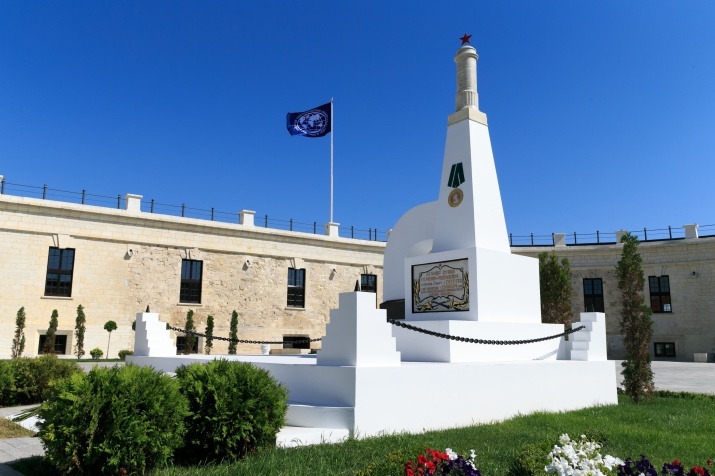History
The construction of the first coastal fortifications of Sevastopol began in 1783. This year was also marked by the annexation of Crimea to the Russian Empire and by Catherine II's decree on the creation of the Black Sea Fleet.
In 1794, a two-tier stone-earthen battery was built on the Konstantinovsky Cape at the direction of Alexander Vasilyevich Suvorov.
Konstantinovskaya battery in its present form was built in the period from 1836 to 1840. The project was designed by engineer Colonel K. Byurne. Emperor Nicholas I personally made changes to the project. The battery consisted of three parts: a casemate fort in the shape of a horseshoe, an annex and two defense walls connecting the fort and the annex. Thus, it was a closed, convenient territory for defense.
There were powder cellars on the flanks of the casemates, and there was a large tank of water in the courtyard. Defenders of this fortification could withstand a long siege of the enemy.
On October 5, 1854, during the events of the Crimean War, the battery was the main target of the English fleet and successfully repelled the attack.
At the end of the 19th century, it served to observe the entrance to the Sevastopol raid.
During World War II, the Konstantinovskaya battery became one of the strongholds of the defense of the Northern side. At the end of June 1942, the garrison of the fort held a defense for several days. The dead batterymen were buried in the courtyard of the citadel. After the liberation of Sevastopol, a monument was erected at the place of the mass grave. From 1944 to 2014, there was a military unit in the territory of the Konstantinovskaya battery.
In 2014, the Russian Geographical Society took the Konstantinovskaya battery under its protection and began large-scale works on its reconstruction.
The builders restored the battery according to the old drawings provided by the Central Archive of the Russian Navy in St. Petersburg. Today, the fortress is a unique open-air museum: a historical exposition is open to the public in the battery’s casemates.

